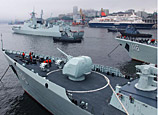
Defense Engineering of the Great Wall: People accumulated a wealth of experience during the more than 2,000-year construction process of the Great Wall. First, in regards to the layout, the Emperor of Qin Dynasty summed up the experience as "taking action that suit local circumstances and using danger to handle the blocking" during the construction process of the Great Wall. People have consistently followed the principle in the next 2,000 years after, and this also became an important basis of military deployment. In regards to the building materials and architectural structures, people adopted the principle of "obtaining building materials from nearby areas and applying varied wall structures in accordance with the materials available" to create a lot of structural approaches. The walls have rammed earth, block and plate stone, brick and stone, and other structures. The Great Wall paved in desert has a multilayer structure composed of branches of the branchy tamarisks, reeds and sands and can be called the "wonderful workmanship excelling those created by nature." The sites of this kind of Great Wall built during the Western Han Dynasty more than 2,000 years ago still exist in the Yumenguan Pass and Yangguan Pass of Gansu Province and Xinjiang Uygur Autonomous Region.
The walls of the Great Wall: The walls of the Great Wall are the main part of the defense project. Walls on lofty mountains and steep hills or on strategic places in plains that are difficult to attack were constructed in accordance with the topography and the needs of the defense function. On plains or strategic passes, the walls were constructed very tall and strong, while on lofty mountains and steep hills, the walls are lower and narrower in order to save manpower and cost. The ancient people even directly adopted the mountains as the wall of the Great Wall in some of the most dangerous and difficult places. The walls of the Great Wall in the Juyongguan and Badaling areas and in provinces such as Hebei, Shanxi and Gansu are generally about seven to eight meters high and the thickness of the bottom of the walls is about six to seven meters, and the width of the top of the walls is about four to five meters. At the top of the walls, there are parapets inside with a height of more than one meter to protect soldiers from falling, and ramparts outside with a height of about two meters that have viewing holes at the top and both shooting and viewing holes below so soldiers could observe, shoot, and throw off rolling timbers and stones. Some important walls were also covered with a protection layer upon layer to stop enemies from climbing up the wall. In the middle of the Ming Dynasty, Qi Jiguang, a military strategist and illustrious general, significantly improved the defensive works of the Great Wall after being transferred to the ancient Jizhen as a military chief. He constructed watchtowers on the top of the walls to accommodate patrol soldiers and store weapons, food and clothes, which greatly strengthened the defense ability of the Great Wall.
Passes: The passes are the most concentrated defensive positions of the defensive line of the Great Wall. The deployment of the passes is very important. People usually chose terrains that were favorable for defense, so armies with few troops usually choose terrain that are conducive to defense when fighting powerful enemies. The ancient people have a saying that goes, "If one man guards the pass, 10,000 will be unable to get through." This vividly illustrates the importance of the passes. There are a large number of various passes along the Great Wall. There were nearly 1,000 various passes during the Ming Dynasty such as the famous Shanhaiguan, Huangyaguan, Juyongguan, Zijinguan, Daoma, Pingxingguan, Yanmenguan, Pianguan, Jiayuguan, as well as the Yangguan Pass and Yumenguan Pass that existed during the Han Dynasty. Some large passes such as the Shanhaiguan Pass also have many small passes around it. They jointly formed the defensive engineering system of the Great Wall. Some important passes possess several defensive lines themselves. Apart from the Juyongguan Pass itself, it also had three defensive lines, namely the Nankou, Beikou and Shangguan. Beikou, also known as Badaling, is the most important defensive line of the Juyongguan Pass.
 |  |
















 Teenage crash victims were talented students
Teenage crash victims were talented students


![]()
